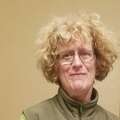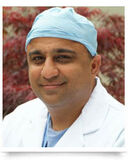Technology Update: The ValveXchange Has Its First Implant!
By Adam Pick on October 9, 2011
Needless to say, this is a very exciting time in the development of heart valve therapies. In my opinion, this segment of cardiac care just became even more exciting as ValveXchange reported the first-in-man (FIM) implant of its two-part, heart valve replacement system.
“What is a two-part heart valve replacement system?” you might be wondering.

As shown above, the first part of the surgical system is the permanent implant of the Vitality base within the valve.
The base is similar to a “dock” which holds the second part of the system, a replaceable leaflet set. Yes, you read that right… A replaceable leaflet set!
Plus, the leaflet set was designed to be replaced through the apex of the heart — which means the patient would not require sternotomy or thoracotomy to replace the worn-out or calcified leaflets.
The potential impact of this experimental technology is very, very, very interesting. As prosthetic tissue valves typically wear out between 10-15 years, the ValveXchange system could eliminate the need for follow-on, invasive procedures during the patient’s lifetime. For younger patients, that might be an appropriate alternative to selecting a mechanical heart valve replacement that requires lifelong Coumadin therapy.

ValveXchange Implant Team
The first three ValveXchange procedures were performed by Dr. Adrian Ebner and two incredible supporters of this community — Dr. Randolph Chitwood and Dr. Lars Svensson. All three patients are recovering normally. Following the procedures, Dr. Chitwood and Dr. Svensson noted:
“The cases went extremely well. We think we’ve got an excellent valve concept. The patients have come off bypass without any difficulty, excellent gradients, good cardiac outputs and good ventricular function.”– Dr. Randolph Chitwood
“With other valves if you break a suture you’re basically committed to taking the valve off and out. Here there are no leaflets, so it’s very easy to see and put in extra sutures.” — Dr. Lars Svensson
As for the availability of the ValveXchange system, please note this technology is not FDA approved. According to the company, it will pursue clinical trials which are expected to start next year.
So you know, I was very fortunate to speak with Dr. Ivan Vesely, a PhD Biophysicist, who founded ValveXchange. During our discussion, I quickly learned how dedicated and committed he was to the pursuit of healthy heart valves. That said, I want to wish Ivan, Ranny, Lars and the ValveXchange team “Congratulations!”
Keep on tickin!
Adam
|
Donald Henry says on October 9th, 2011 at 7:24 pm |
|
This ValveXchange technology sounds very exciting for those of us, who will need a valve replacement in the next few years. Let’s hope the studies prove worthy of FDA aproval real sooon. Don |
 |
|
Maureen Lamarche says on October 10th, 2011 at 7:31 am |
|
Ditto to Don’s response. I am at the one year after point and considering how fast this year went I’m thinking 10 or so years will go by quickly. Thanks to all those involved in the process. I’m waiting to hear more…Maureen |
 |
|
Lorri says on October 10th, 2011 at 10:15 am |
|
The information re the ValveXchange replacement procedure, plus visual display of this unique ValveXchange, is very comforting to those especially who have multiple valvular disease… |
 |
|
Donald Henry says on October 10th, 2011 at 11:19 am |
|
How were these surgeons able to perform the ValveXcahnge procedure for valve replacement if it wasn’t approved by the FDA ? I have a bovine tissue valve and am in my 12th year, so would this procedure be available in the next 2 years when I am most likely to need another aorta valve replacement? Would I be a qualified candidate? |
 |
|
Tunisino says on August 20th, 2013 at 4:15 am |
|
Yes! The valvexchange seeks european approval for its novel 2 parts tissue valve, once CE mark obtained the company will start commercial sale of the product in europe by early next year.The technology is intended for aortic valve position for now and hopefully other positions like the mitral will be next. |
 |












